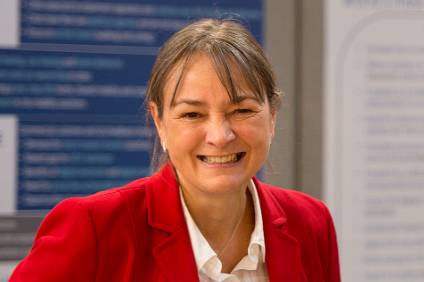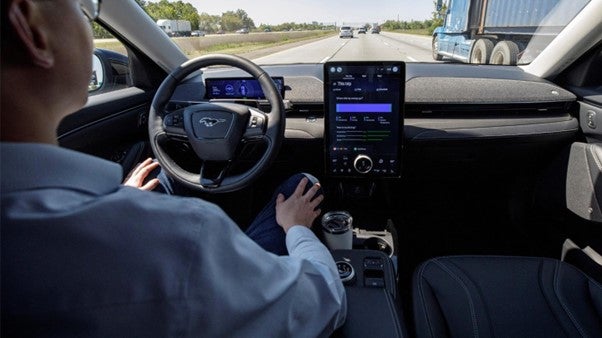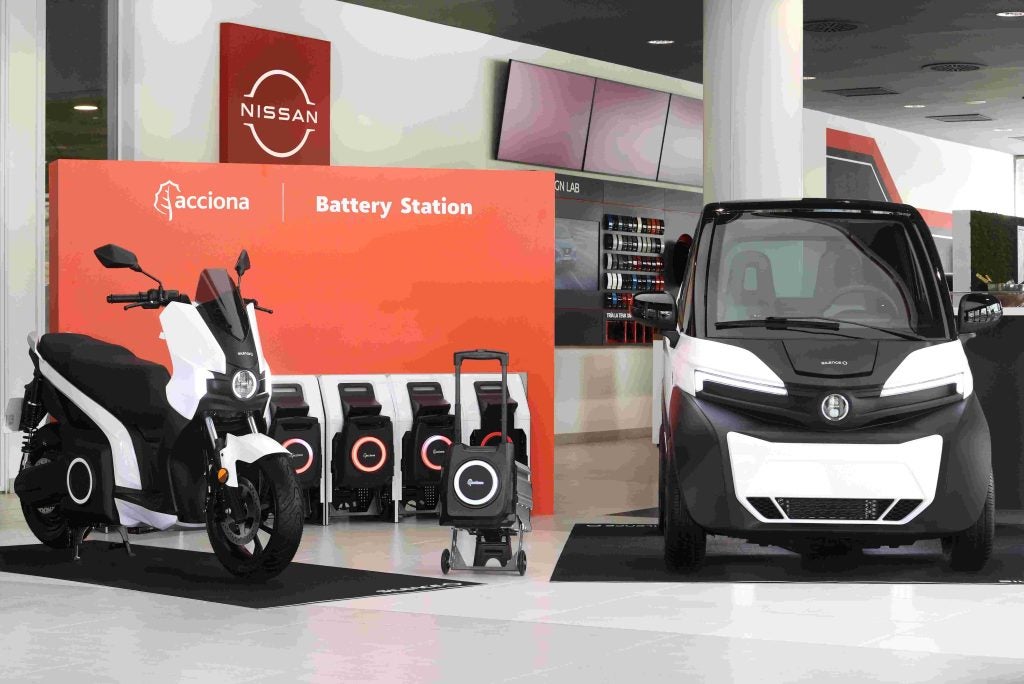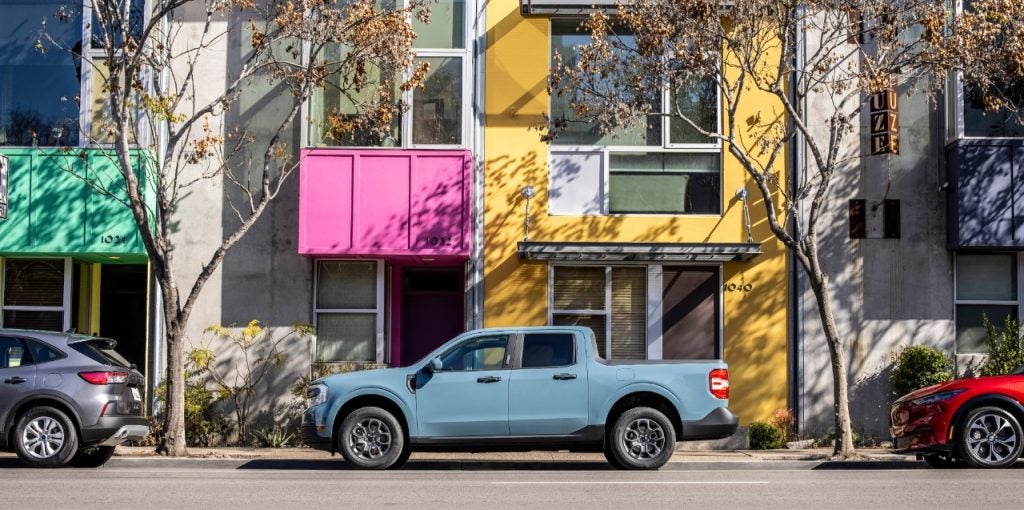
In September of last year, Sarah-Jayne Williams joined Ford as its first director for ‘Smart Mobility’ in Europe. Her job is to focus on future mobility solutions for Europe and to define and implement Ford of Europe’s Smart Mobility strategy. Dave Leggett recently caught up with her in London, where a ‘Chariot’ shuttle service has just launched.
DL: What’s the basic thinking behind the ‘Chariot’ minibus on demand service that recently started operations in London (as well as several cities in North America)?
SJW: It can serve under-served or poorly-served routes with the goal of plugging people into public transportation. Some of the routes go from newer housing developments and can take people to a mainline station; others are in established areas but not well served by public transport.
DL: That’s interesting, but why wouldn’t existing public transport providers be already serving these routes?
SJW: That’s a good question. You have to remember that TfL [Transport for London – London’s transport authority and regulator] has a lot of resources at its disposal. When we did our initial analysis to identify routes, we used some of their resources that show coverage. I think a lot of it [provision gaps] is where there has been new development. You have got people who have moved into new areas who need good access and we can provide that, but also provide a new kind of experience.
In the Chariot experience you can pre-book your seat; you know you are not going to be standing, it’s comfortable, you get wi-fi, you can see from the app that your vehicle is coming, you can book your return route as well. It’s a slightly different experience as well as helping to fill some gaps in current public transport provision.
How well do you really know your competitors?
Access the most comprehensive Company Profiles on the market, powered by GlobalData. Save hours of research. Gain competitive edge.

Thank you!
Your download email will arrive shortly
Not ready to buy yet? Download a free sample
We are confident about the unique quality of our Company Profiles. However, we want you to make the most beneficial decision for your business, so we offer a free sample that you can download by submitting the below form
By GlobalDataDL: How did you select the four routes for the London Chariot service?
SJW: The Chariot team made extensive use of existing TfL resources – publicly available data – as well as conducting our own research to find suitable routes. We recently launched the first four routes. The feedback so far has been incredibly positive. We are delighted with the initial rollout and comments from users that we are getting – for example through Twitter, but also personal comments and emails received from people beginning to use the service. It has been a really encouraging start. It was a low-key rollout, but word is getting around now. It’s exciting that we are getting plenty of repeat riders.
DL: I guess a company like Ford can be relatively agile with providing this minibus service and identifying new routes in a way, perhaps, that the big public transport service providers are less set up to do?
SJW: An advantage we have is that we own the whole experience – we own the vehicles, the software around it, the drivers are all full-time employees of Chariot – and we are also hooked in to the living wage. We have created a holistic experience, which we think does give us quite a unique situation.
DL: So you don’t work with a partner – for example on the telematics and information side?
SJW: We literally own the whole thing, end-to-end. And that’s a deliberate thing. We want to create a quality experience for people and we want control of all aspects to ensure the service delivery we want.
DL: As a commuter targeted service, taking people to work during times of peak traffic conditions, do longer journey times act as a deterrence?
SJW: The routes are running to facilitate commutes – three start at 6:30am, one at 6:00am and then they run again in the evening for the journeys home. There’s a vehicle every ten minutes, so even if there are delays, because you have booked a place on a fixed vehicle, you can see where that vehicle is. And you can elect to stay inside, have a coffee, fill the time before you know that the vehicle will be at the station.
DL: It’s all about that commuter market then…
SJW: Yes, we have identified an opportunity to enable commuters to manage that first or last mile.
DL: Could you see the concept being extended to other parts of the urban people moving market – shoppers say, or leisure travellers – at other times of the day or weekends?
SJW: The goal at the moment is to deliver a great service on what we are doing. We have to become established and build a reputation for the quality of experience we are seeking to deliver. Alongside that we are looking at routes for businesses – businesses that may want to provide a shuttle service – and charter solutions also. It’s a slightly different dynamic with those, but complementary to what we are doing.
DL: How big is the fleet in London? They’re long wheelbase Transit minibuses I assume?
SJW: Yes. There are 14 running on our fleet at the moment. They are all fitted out as Chariots.
DL: Can Chariots operate in bus lanes?
SJW: Yes, the TfL provided licence is a London Service Permit which allows the Chariots to use bus lanes, as buses do.
DL: Will the Chariot scheme actually contribute to reducing road congestion?
SJW: The rationale is about moving away from a single person in a vehicle. We are encouraging people to make the behaviour change to go into a shared vehicle, which is one of the things that ultimately will reduce road congestion and also have a positive impact on air quality. We’re delighted, also, that TfL has recognised the value of moving towards these shared shuttle type services. This change in behaviour can take cars off of the road – we’ve seen that from Chariot schemes in the US also.
It’s not just the single person in the car, there are different journey patterns we can impact – for example, sometimes a partner may get dropped off at a rail station and a Chariot ride may mean that journey is no longer necessary.
DL: Besides the US (which has five Chariot schemes) and London, there must be opportunities to take this concept to other parts of the world?
SJW: Certainly. London is the first city in Europe – or outside of the US – to get the Chariot service.
DL: Asian cities?
SJW: We are looking at our expansion opportunities but we don’t have any specific cities targeted at this point in time, but if you look around the world – at changing dynamics in China and India – these are the types of solutions that are growing. I think it’s slightly different in emerging markets where you may not be going from using a car to moving to a shared solution. In developing markets it may be more about providing accessibility, which is a different dynamic.
DL: Will Chariot make it to other European cities soon?
SJW: We’ll focus on getting London up and running, then look at the learnings and then focus on where to expand.
DL: It’s fascinating to see a car company addressing changing mobility needs – especially in urban areas – and embracing new thinking like this. Does it feel a little strange, when the core business is still making cars for sale to people who want to own them?
SJW: As a company we come back to our beginnings and Henry Ford’s goal of providing mobility to the masses. By providing mobility you create human progress was very much his thinking. For us to continue providing mobility, we can’t just keep putting cars into cities. Although some of what we are doing is not making physical cars, it is actually extending the vision of providing mobility. There was a strong message along these lines in Bill Ford’s TED talk: as a car company, we have to change.
Jim Hackett was running our mobility business and is now our CEO. Mobility is at the heart of the business. It’s no longer a case of…there’s the vehicle business and then there’s this new and emerging bit. We have to think about this holistically and together. We absolutely will continue to build and sell vehicles, I don’t see that changing. However, I think the use of vehicles and the types of vehicles in cities will change.
We do see changing behaviours, but it’s not necessarily generationally driven. Young people get older, they have children, their needs change – a life-stage thing. Similarly, folk of all ages in cities are reacting to road congestion and the rising costs of vehicle ownership.
The general thinking that young people will stop buying cars is rather simplistic. We will see changes. There will be reduced car ownership in and around cities, but it’s more about mobility options and what works best for people, what modes of transport and the modal mix, works best. And it depends on needs the traveller has – do they want a fast journey, a cheap one, a comfortable one, greenest? There’s a changing dynamic that we, as a car company, need to think about. How do we help our driver-customers, as well as citizens more generally, to make the choices around the best way of getting from point A to B?
DL: Do you see Chariots eventually running without a driver?
SJW: It could eventually be the case, of course.
Some interesting work we are doing in America surrounds non-emergency medical transportation and one of the biggest values in the service we are providing – taking people to hospital, some of whom have very little human contact – is the human element. The feedback we have had is that having a driver is one of the biggest causes of satisfaction. The driver gets to know them, asks them how they are doing and so on. There are times when the full autonomous solution is appropriate – driverless trains for example – but there are also times when the value of having a human as part of the service is really very high.
See also:
Ford launches London minibus ‘shuttle service’ on four routes
‘A future beyond traffic gridlock’ – Bill Ford’s TED presentation
Ford opens London smart mobility office
Ford appoints ‘smart mobility director’ for Europe
Ford to open Smart Mobility Innovation Office in London
About Sarah-Jayne Williams
Sarah-Jayne Williams joined Ford in September of 2017 as its first director for Smart Mobility in Europe. She reports to Ford of Europe president and CEO, Steven Armstrong, and to John Larsen, Ford’s vice president, Global Operations, Smart Mobility. She is based at the Ford Smart Mobility Innovation Office in London.
Prior to working at Ford, Williams was at BearingPoint, a global business consulting firm, where she was a partner in the Automotive team and led the company-wide Connected Car Centre of Excellence. She has worked with OEMs and automotive leasing providers to design and deliver new business models, digital strategies and connected car services.
She was also an active leader in diversity programs and established the BearingPoint Foundation, which channels BearingPoint’s corporate social responsibility activities. Prior to joining the consulting industry, she worked for Motorola.
Williams is a past winner of the Management Consulting Association award for Marketing Consultant of the Year, and a joint team winner with Jaguar Land Rover for the 2015 Management Consulting Association Digital and Technology Project of the Year for Connected Car.







